Submitted by Antonello Magliozzi
"My idea for space is to interlayer movable experiences within" says Carla Sozzani
Italy Architecture News - Jan 14, 2020 - 09:17 9904 views
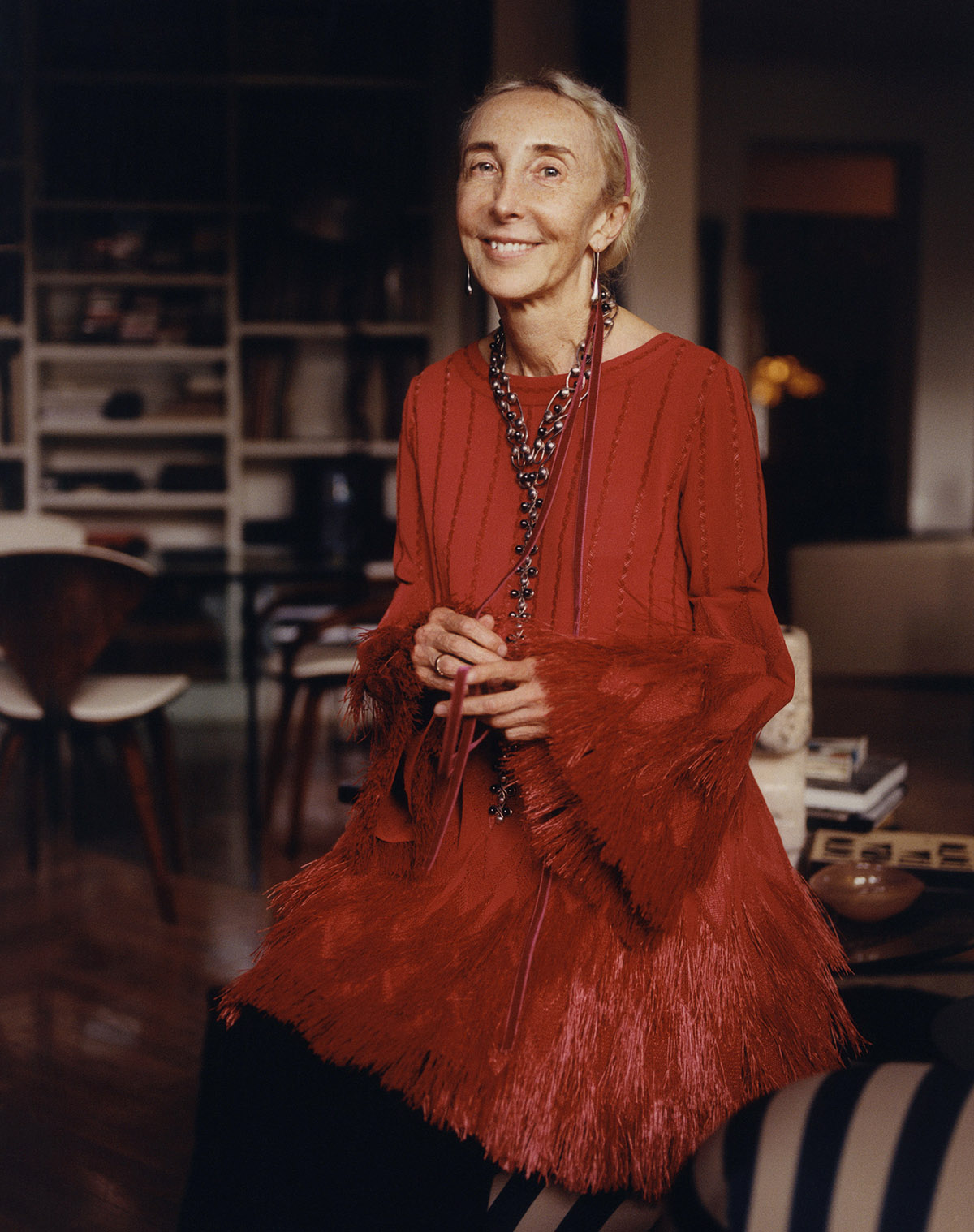
"For me, furnishings reflect my concept on how I approach space in my life, where perspectives can be changed and you can move things whenever you want. You need to live every unique experience with all 5 senses!," says Carla Sozzani in an exclusive interview.
Few words that summarize the visionary idea of the person who wrote the history of style with magazines such as Elle and Vogue, who in the last thirty years has influenced communication and expressive language like an avant-garde. A person who is today a symbol of Italian excellence, included in the BOF500, among the most creative people in the world who influence business of fashion and we could say, in a broad sense, among those who influence new ideas for art.
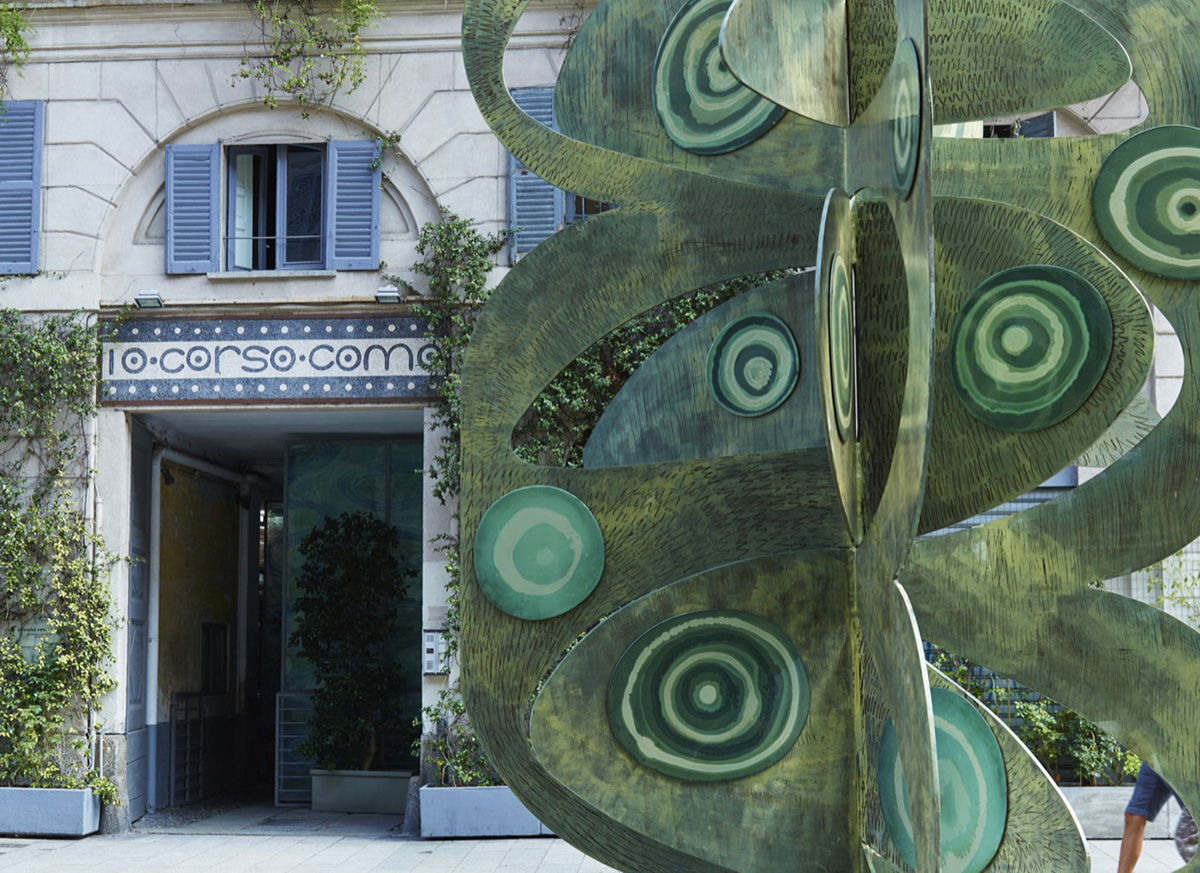
10 Corso Como, MIlan. Image © 10 Corso Como
With 10 Corso Como, Carla Sozzani has expressed a new idea of space and about communication projected into the future that has, at the same time, strong relationships with classical history and the past. An original testimony that is also interesting from a specific perspective, that of architecture and design. This is why Carla tells today in an original interview of WAC about her vision, about her personal relationship with art and architecture, telling also how her idea of "concept store" has evolved over time. An idea that recalls the concept of "Gesamtkunstwerk" by Richard Wagner, of the total work of art, where architecture blends with all "arts", where all forms of expression live together in an organic unicum.
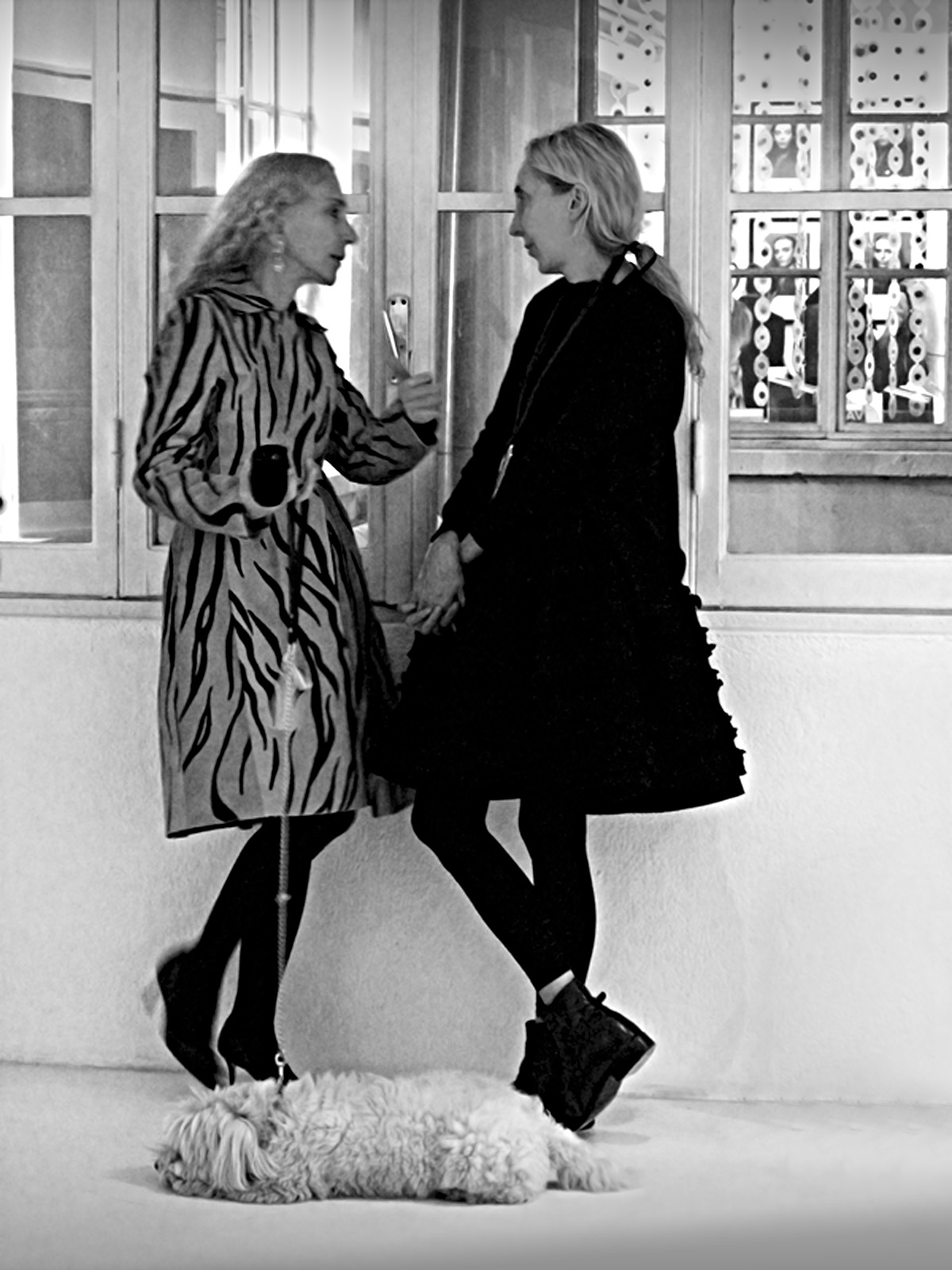
Carla & Franca Sozzani, MIlan. Image © 10 Corso Como
Carla has grown by cultivating a strong interest in art since she was a child and she tells it to us thus: "I was very privileged. My father was an engineer who was also passionate about art. He led me and my sister Franca every Sunday, not to church, but each Sunday to a different church in Milan to see and learn about the architecture and art that was inside! So we both grew up with this ideal of beauty. Milan has incredible churches that reflect all periods of architecture. It's not easily learned in books; you learn it by living and growing; by paying attention to what is in the space and how you see it. I think I owe my sensitivity to beauty to this - to how I grew up. I was so passionate about this idea that I really wanted to do architecture at university. However, my father had other ideas about my education. At the time, architecture was not suitable for women, so in the end I studied foreign languages and literature with the Marcelline nuns and then I went to Bocconi University. But in reality my dream has always been that! To see beautiful things in all sorts of spaces".
A sensitivity for art and architecture that Carla has never left, and which could be synchronized with her description of the birth of 10 Corso Como: "When we came to 10 Corso Como in 1985, we first took a large space for the gallery on the second floor. The building and courtyard, when we arrived, was full of different activities: there was a garage where they washed cars, there was a greengrocer, there was an artist on the mezzanine until 1998, there was a seamstress, with a shared bathroom on the balcony that you could never use. It was for us a conquest. Every year, space by space we would expand. And every time we could grow, I would think: what am I doing here? And in my opinion the beauty of this place (ed. 10 Corso Como, Milan) which has a lot of flaws, with imperfect walls and many irregularities, is because it has grown in this organic way. It was not a single marketing project: it was born slowly but also almost spontaneously. That’s why this place has a sense of a living environment, doesn't it? I could say a sense of home."

Galleria Sozzani entrance, 90' photography. Image © 10 Corso Como
This is how Carla's vision materialized, that vision that has become the symbol of her "concept store": "When we first created 10 Corso Como we knew we wanted to have our visitors experience the space with all 5 senses. After working in magazines creating editorial space in two dimensions - and remember in 1985 there was no internet, there was no google, there was nothing! Even barely in the 90s e-mails perhaps - I wanted to create a place where people would like to meet in a space offering different experiences of the senses to share. It was from there that the ideas on how to occupy the rooms with art shows and a book store, and a cafe in the square. And then introduce a garden where people walk, make a path and enjoy the experience! "An experience that sees in the presence of greenery an indispensable component and that Carla tells in this way: "when finally, the cars left the ground floor, it seemed logical to favor the presence of greenery. Now, in all the 10 Corso Como , I introduce a space for greenery. It seems so fundamental to me to be inspired by the beauty of Italian gardens. I think it all came from my classical education: gardens and the greenery were clearly necessary to have a holistic multisensory experience."
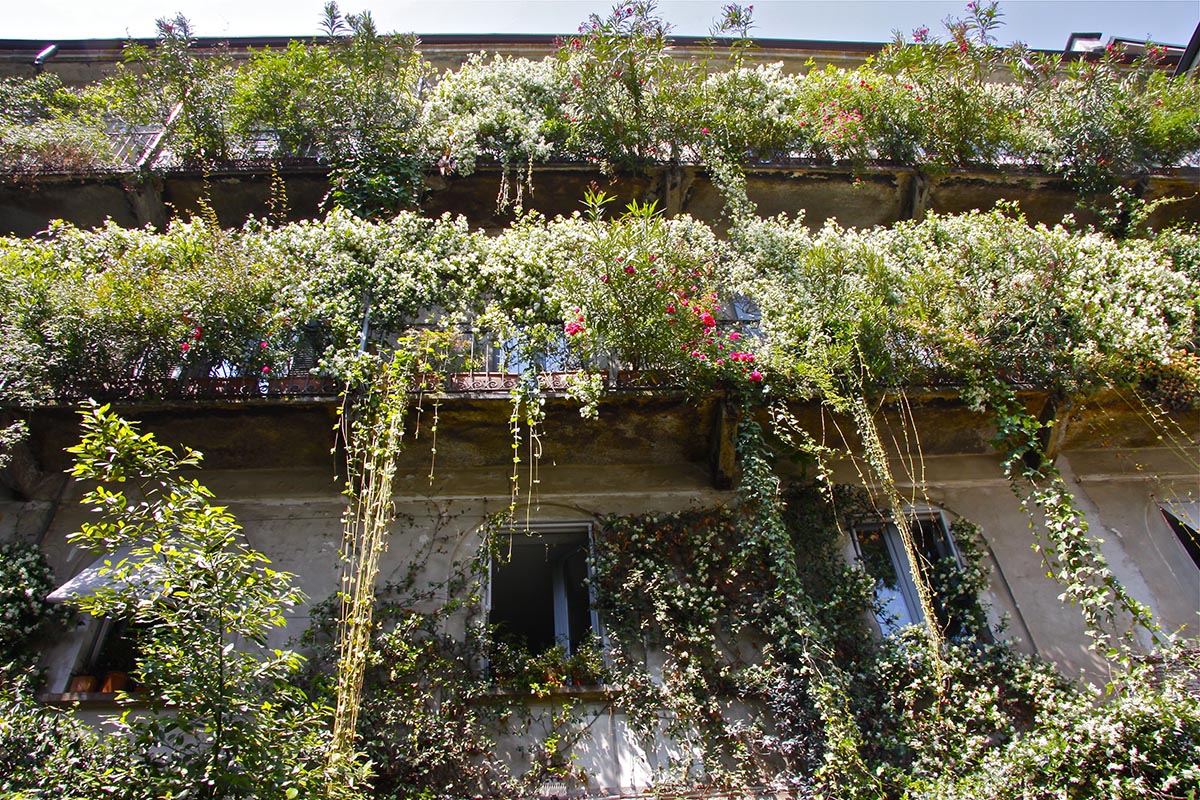
10 Corso Como courtyard view. Image © 10 Corso Como
And the result of this creative synthesis thus generated the idea of a particular square, one defined as "Italian square", a places created for people to give a multisensory experience: from the beauty of exhibitions, to the originality of the same finely decorated spaces and with a strong focus on the greenery, the kitchen of its restaurants, the library, the hotel suites, the cinema of the installations and the music, with an ever-present and refined soundtrack. Spaces for a stimulating, creative experience aimed at personal well-being, towards the search for beauty.
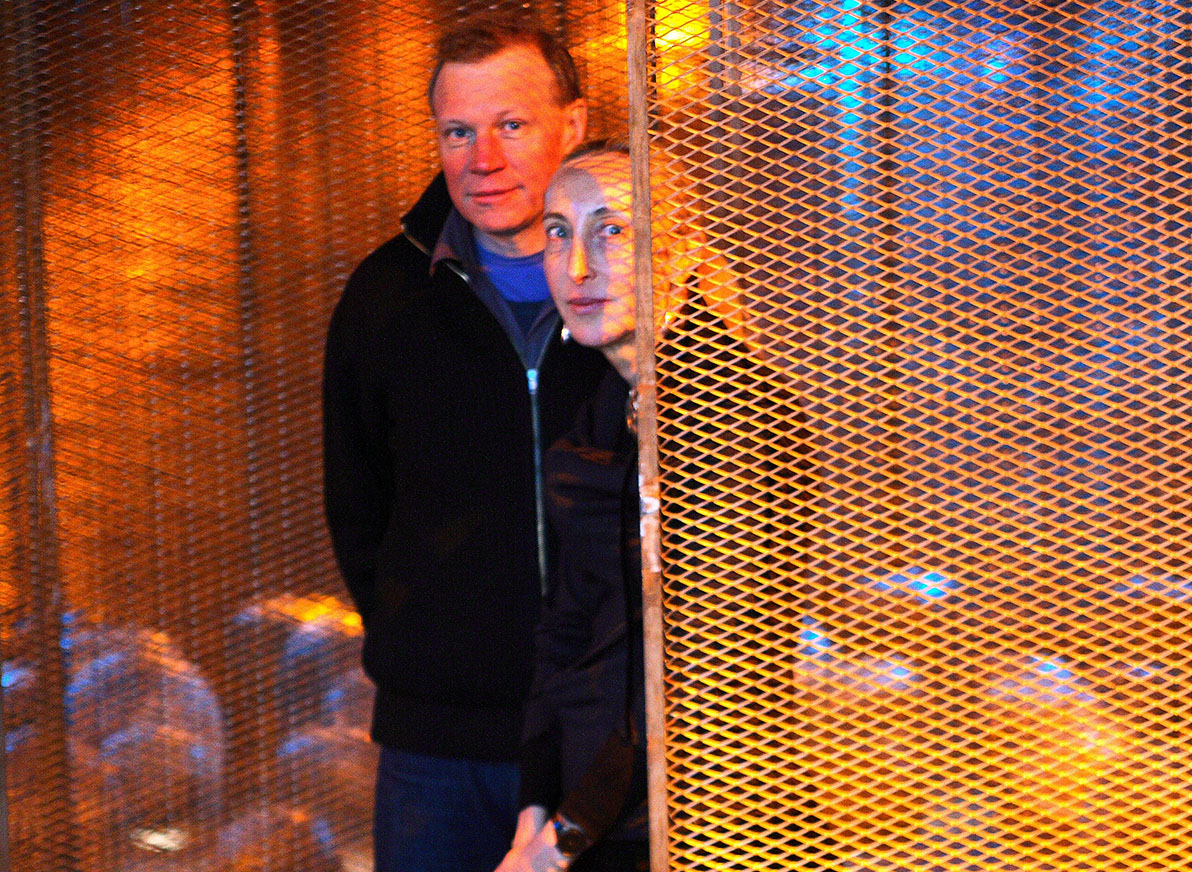
Carla Sozzani & Kris Ruhs. Image © 10 Corso Como
Listening to his words you feel the presence of an important figure, that of Kris Ruhs, an American painter and sculptor. A prolific artist who has accompanied Carla symbiotically on her creative journey since the 1990s. And, Carla tells us about him like this: "I have to say that Kris Ruhs, an American artist who become my partner and with whom I share life and work, was very supportive of my idea. At the time we met, I admired his paintings and sculptures, but he was an artist who did not design spaces or furniture. I would share with him my idea of a new kind of gallery, a destination for many things happening there. And so on the back of a napkin he designed the logo of 10 Corso Como. From that all the packaging, then all the furniture, then chandeliers, plates, jewellery, vases, all started to come from his studio. As an artist he thought everything in movable pieces. , nothing with a fixed, or stable position."
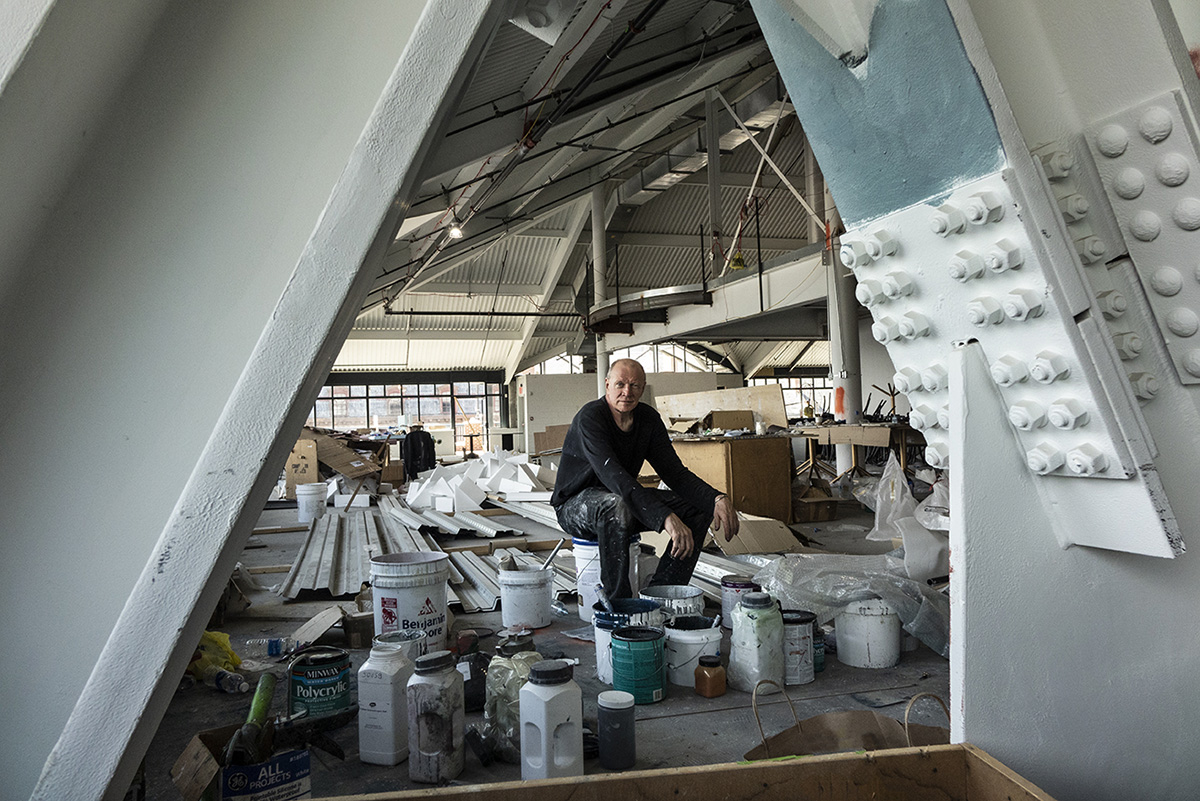
Kris Ruhs in his studio. Image © 10 Corso Como
Over time Carla has opened her "concept" stores in Tokyo, Seoul, Shanghai, Beijing and New York. They all have a similar creative imprint while being each quite different. Some might say, it looks like Carla was the designer. In this regard, however, she tells us: "at 10 Corso Como there is a very distinctive sign for sure, it is the sign of Kris! But as Kris says: "I no longer know where I am and where Carla is." It is clear that they do it together. For example, to tell how they first managed the spaces, Carla laughs as she says: ... Kris said to me: how do you want the courtyard chandelier? (ed. The chandelier falls between the stairwell in 10 Corso Como) and I said, "I would like it to come way down! That is all we needed. It is such a beautiful journey of work done together, and we have been working together in this way for 30 years!."

10 Corso Como, New York. Image © 10 Corso Como
"I never wanted to make a shop. For this reason: first I opened the gallery and the bookshop. Kris designed the lights, the tables and all the furniture there. All the pieces in every different 10 Corso Como space has always been conceived as unique pieces. Be in Shanghai, in Seoul, or in New York, Kris has always made pieces that were only for that place, to make that space its own!."
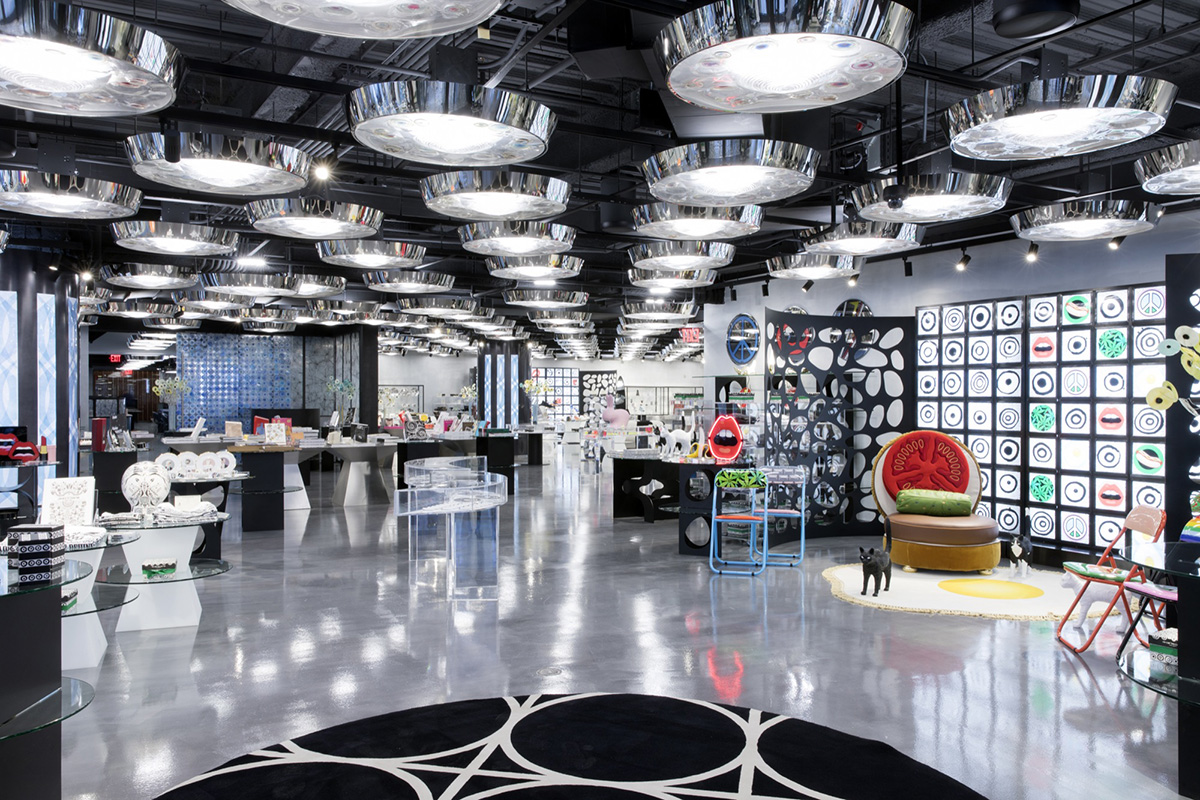
10 Corso Como, New York. Image © 10 Corso Como
Carla also says that: "spaces and furnishings are "layered" as we layer life; with perspectives that can change and things you can move whenever you want. A different concept from how it happened in the design of the 70s, where there was nothing that could be moved in a house, ….not even a chair could be moved! Crazy stuff! Starting from that cultural background, I was almost panicked in thinking about this idea of immobility. A strong desire was born to create spaces with movable objects. This was to be able to reconfigure them anytime according to the needs of our lives that are always changing."
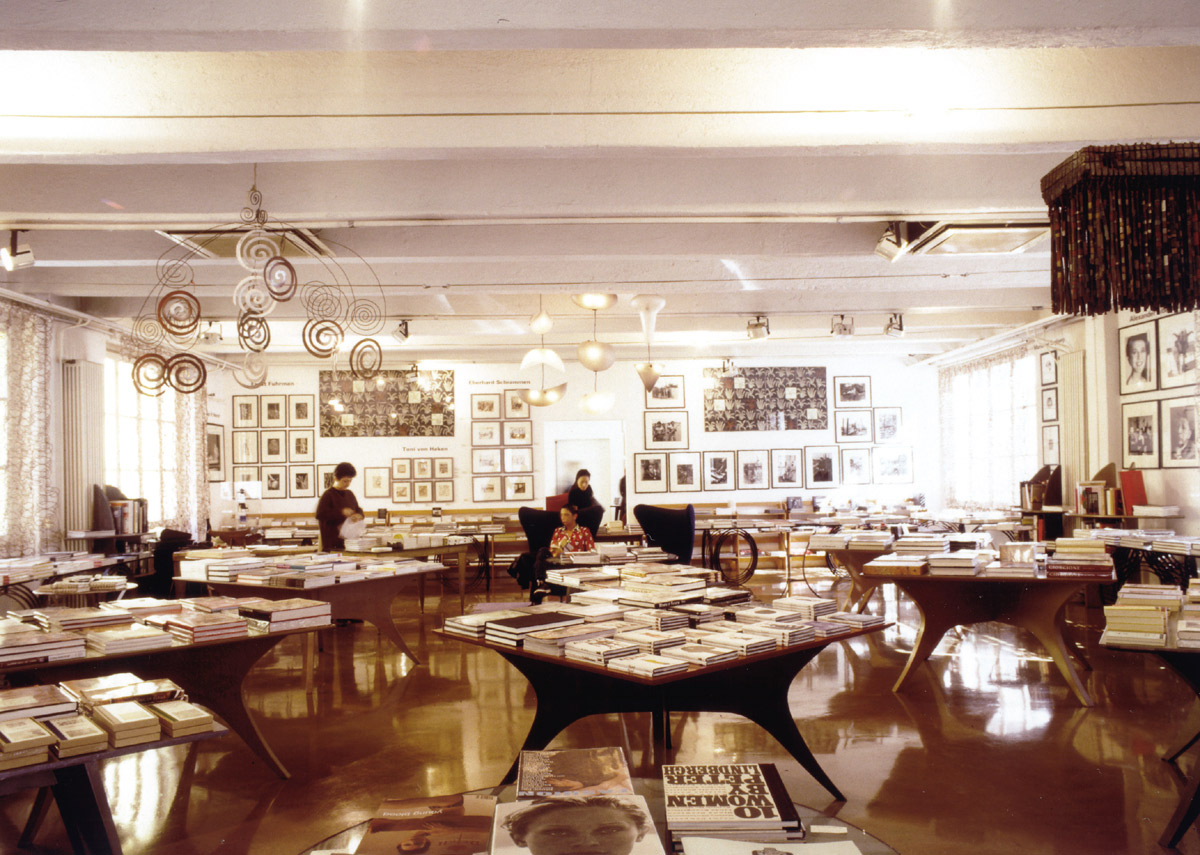
10 Corso Como Library, Milan. Image © 10 Corso Como
However, the main driver of spaces created by Carla is undoubtedly attributable to her idea of communication. A strong idea started 30 years ago and which still remains valid today. Regarding the last historical period, Carla indeed stresses that: "In the past 10 years there has been a sort of "hangover" of communication: between online sales, people who no longer read newspapers, with poor human relationships, and so on. Even in the past three years, I remember a Valentine's Day here, in 10 Corso Como, in which all the couples were on the phone. One in front of the other on Valentine's Day: they exchanged messages and photos on the phone. So actually the reason why 10 Corso Como was born was because there was little opportunity for physical communication. Today in my opinion the idea behind 10 Corso Como has even more value than before. This is because: living an experience is always fundamental to life. It is fundamental to live with all our senses! I said this thirty years ago and now, even more convinced than I was thirty years ago!."
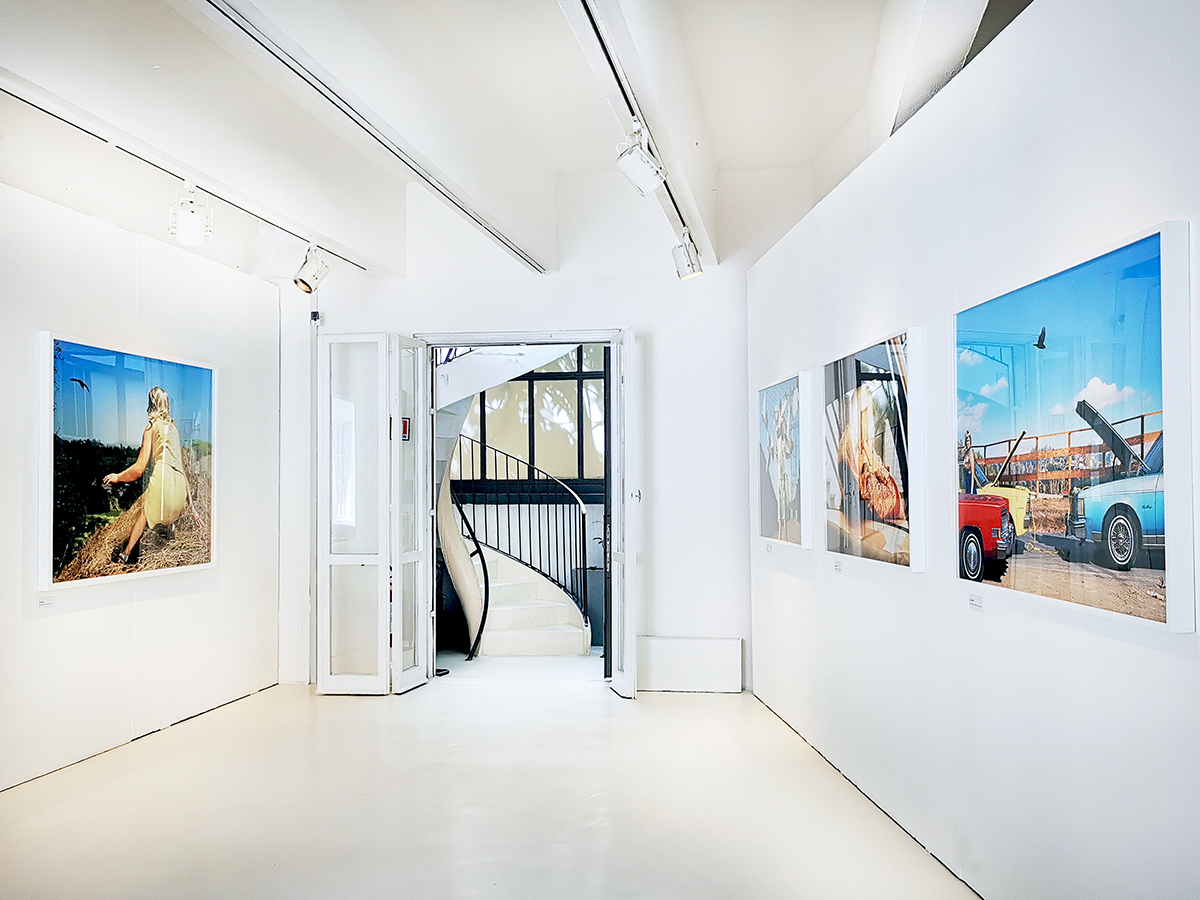
10 Corso Como Gallery, Milan. Image © 10 Corso Como
However, Carla is convinced that something is changing in people's habits today and she’s pervaded by a certain optimism. Carla tells us of her optimism in this way: "Being in a public place means "serving people" and welcoming them,. I see that today people like much more to drink, eat and talk, have a sense of conviviality. A sense of sharing that wasn't even there before in every gesture, including eating. Once people ordered for themselves, now everyone shares their plate. I see a desire for sharing especially in young people who are cross-pollinating (I hope) all of us and I find it beautiful! » A change she also sees in the city of Milan and that summarizes with these words: "especially after 2015, after this amazing Milano Expo which, unlike what happened in all the other cities that have hosted the Expo, a renaissance has taken place. During the ’90 I have always heard it said: ah what a gray Milan! Lately instead: ah what a beautiful Milan! Interesting Milan, beautiful exhibitions in Milan, things happen in Milan, etc All this, however, only in the last 4 years. All of this is very interesting to me, to see things as they change! Which also makes sense: Milan in the 60s was famous for art, there were all the galleries, the 70s for design and architecture, the 80s for fashion ... And today I also see a splendid continuity with the values of Milan in a new renaissance."
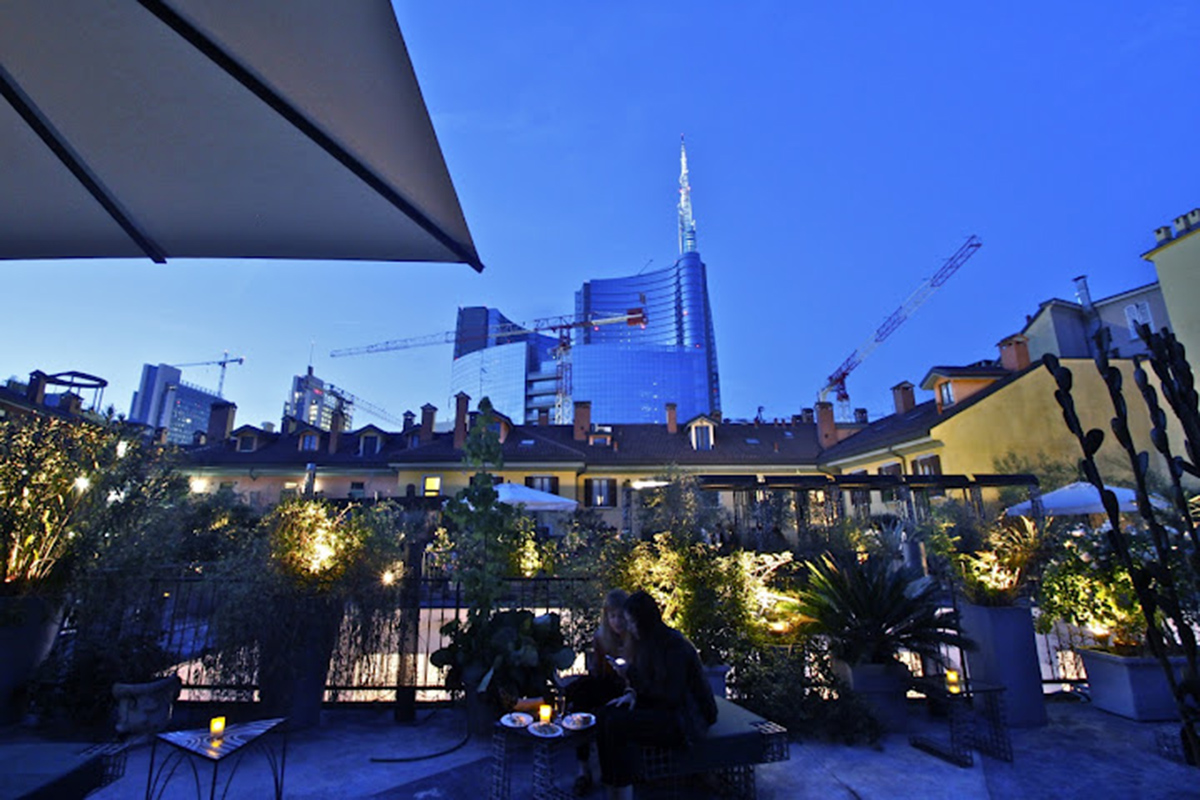
10 Corso Como roof garded view, Milan. Image © 10 Corso Como
An optimism that counteracts her cautious assessment of the future of the planet with respect to the growing problems deriving from climate change. In fact, she believes that in the coming years it will be necessary to give more and more space to culture and, at the same time, to a different mode of consumption: to consume less by paying particular attention to the evolution of the labor market. At this regard, she says: "Without culture, nothing can be made. To respect the environment is the first thing when making anything. Everyone talks about sustainability. Today what you can really do is consume less. It is necessary to consciously respond and determine need. It is also necessary to carefully evaluate what it means for the economy to consume less."
Always thinking about the future, Carla then tells us about her personal project, which continues to evolve into a global formula, which focuses, in addition to the needs of communication and multisensory experience, also on the meaning of cross pollination and hospitality. In this regard, Carla says: "I like the idea of expanding the experience of the concept of 10 Corso Como and of combining it with other environments and other cultures. The cross pollination of cultures is the most fantastic thing. That's why when we opened 10 Corso Como in Seoul, or Shanghai and New York , I think there was a beautiful evolution of the original idea. 10 Corso Como is a symbol of made in Italy, of Italian creativity, of open-mindedness that, in other countries, merges almost spontaneously with other products, other expressive forms, presentations of art, photographers, objects, and food. Thus, 10 Corso Como really looks like an endless idea."
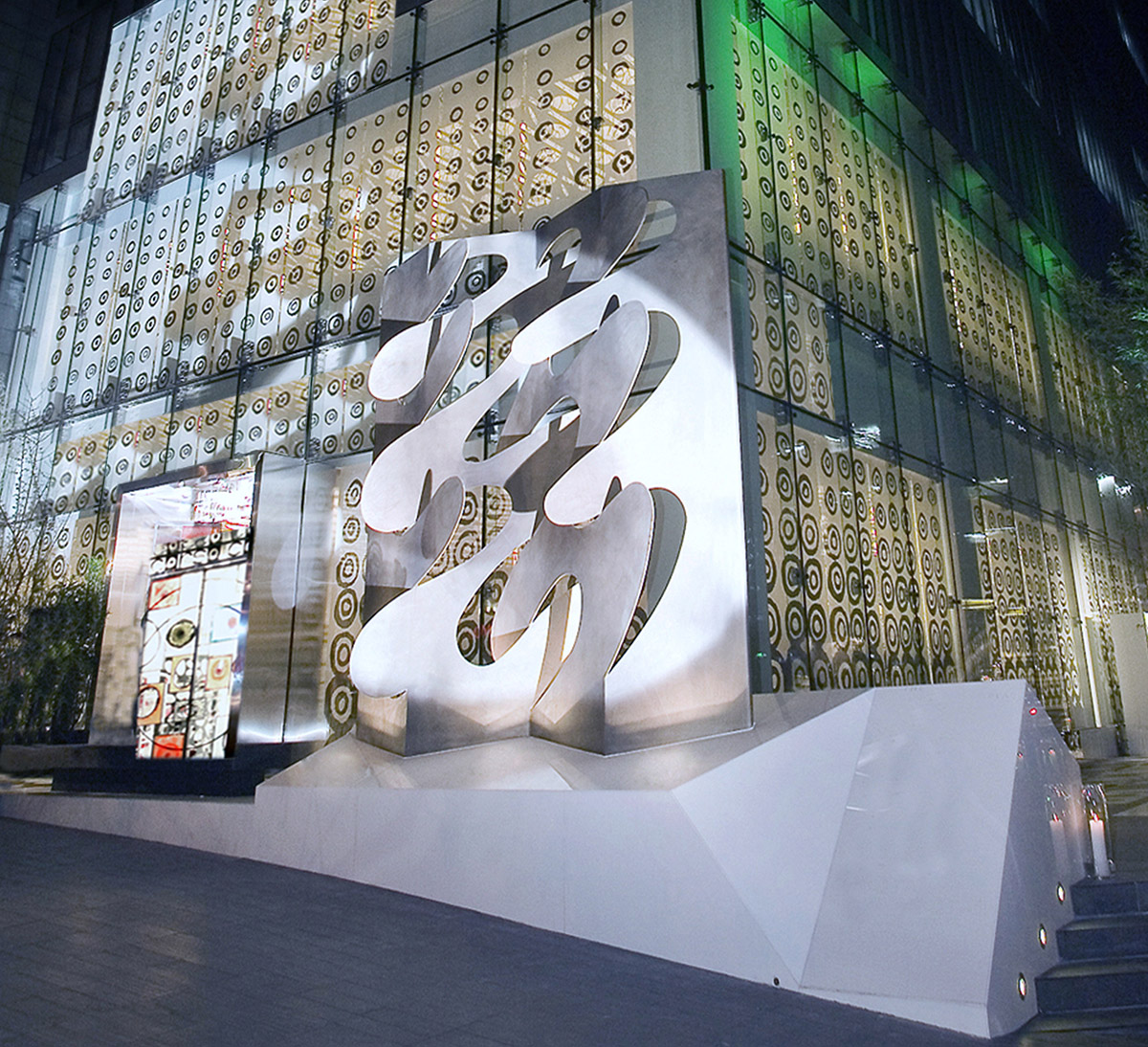
10 Corso Como, Seoul. Image © 10 Corso Como
In this new context, for Carla the idea of the Italian square is still successful today, as it will be in the future, through a symbolic evolution of the spaces. Carla says so: "Today I see that, as in the old Italian squares the pinnacle was the church, here (ed: 10 Corso Como) the pinnacle was the gallery, today I would love to build a new reality, where the pinnacle is the hotel in order to represent the idea of hospitality.A place where guests arrive and feel really welcomed, they have exhibitions, shopping, food, the bar, and a place to decide to stay as long as they want."
That's why she imagined to make people sleep in her spaces since 2003, when she created the 3 suite rooms in 10 Corso Como.
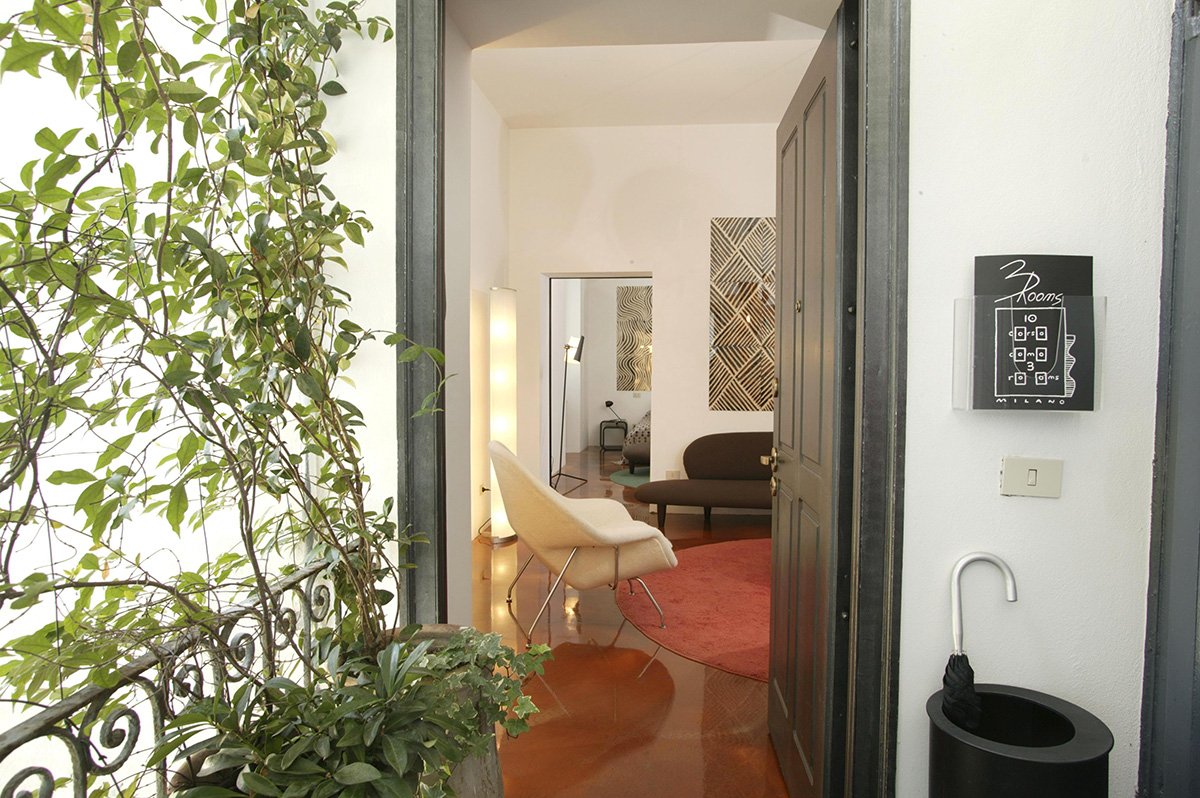
10 Corso Como Hotel, 3 Suite rooms, Milan. Image © 10 Corso Como
And today she says: "I'd like to enlarge this concept out onto the street, all around the internal square. As well as an Italian historical square. Here everything started from an art gallery, then the bookstore, then from everything: restaurant, shop, etc. and finally the hotel."
For Carla people are "welcome guests" at 360 degrees and, therefore, they are always at the center of her spaces. That’s why the architecture of these spaces is so rich in multiple symbolic reminiscences and specific functionalities: vital places to stay, to know and experiment, to ensure the well-being and culture of people.

Read the full transcript of our interview with Carla Sozzani below:
Antonello Magliozzi: About 30 years after the foundation of the first 10 Corso Como, Carla Sozzani has spent a life between art and fashion, directing prestigious magazines in Italy and worldwide, and today she is included in the BOF500, among the most creative people in the world who influence business of fashion and we could say, in a broad sense, among those who influence new ideas for art.
Carla, a lot has been written and told about you talking about fashion and, for this reason, I think it is very interesting to also know your story in relation to the architecture of your spaces. You have a scientific university education, but a strong inclination towards art. Can you tell us how you approached with art and architecture, and how these influenced your life?
Carla Sozzani: Beautiful this question! I was very privileged. My father was an engineer who was also passionate about art. He led me and my sister Franca every Sunday, not to church, but each Sunday to a different church in Milan to see and learn about the architecture and art that was inside! My father was very strict and occasionally scolded us because we didn't recognize Perugino's paintings, for example (ed: Carlas’s laugh). So we both grew up with this ideal of beauty. Milan has incredible churches that reflect all periods of architecture. It's not easily learned in books; you learn it by living and growing; by paying attention to what is in the space and how you see it. I think I owe my sensitivity to beauty to this - to how I grew up.
I was so passionate about this idea that I really wanted to do architecture at university. However, my father had other ideas about my education. At the time, architecture was not suitable for women, so in the end I studied foreign languages and literature with the Marcelline nuns and then I went to Bocconi University. But in reality my dream has always been that! To see beautiful things in all sorts of spaces. Stand in front of a map looking at and imagining spaces.
And this is still true today! When we came to 10 Corso Como in 1985, we first took a large space for the gallery on the second floor. The building and courtyard, when we arrived, was full of different activities: there was a garage where they washed cars, there was a greengrocer, there was an artist on the mezzanine until 1998, there was a seamstress, with a shared bathroom on the balcony that you could never use. It was for us a conquest. Every year, space by space we would expand. And every time we could grow, I would think: what am I doing here? And in my opinion the beauty of this place (ed. 10 Corso Como, Milan) which has a lot of flaws, with imperfect walls and many irregularities, is because it has grown in this organic way. It was not a single marketing project: it was born slowly but also almost spontaneously. That’s why this place has a sense of a living environment, doesn't it? I could say a sense of home.

Antonello Magliozzi: As in the past there were so many different functions even today in 10 Corso Como there are many different functions. Your spaces are in fact born from the idea of a square, of the "Italian square", places that are created for people to give a multisensory experience: from the beauty of exhibitions, to the originality of the same finely decorated spaces and with a strong focus on the greenery, the kitchen of its restaurants, the cinema of the installations and the music, with an ever-present and refined soundtrack. Spaces for a stimulating, creative experience aimed at personal well-being, towards the search for beauty.
Could you tell us how this creative synthesis was born and what specific relationship do you have with architecture and interior design?
Carla Sozzani: When we first created 10 Corso Como we knew we wanted to have our visitors experience the space with all 5 senses. After working in magazines creating editorial space in two dimensions - and remember in 1985 there was no internet, there was no google, there was nothing! Even barely in the 90s e-mails perhaps - I wanted to create a place where people would like to meet in a space offering different experiences of the senses to share. It was from there that the ideas on how to occupy the rooms with art shows and a book store, and a cafe in the square. And then introduce a garden where people walk, make a path and enjoy the experience! When finally, the cars left the ground floor, it seemed logical to favor the presence of greenery. Now, in all the 10 Corso Como , I introduce a space for greenery. It seems so fundamental to me to be inspired by the beauty of Italian gardens. I think it all came from my classical education: gardens and the greenery were clearly necessary to have a holistic multisensory experience.
What happens today with the advent of the internet, which clearly has its weight in the world of communication, is that you think you cannot live your senses through a screen. It's not possible, is it? How do you do? You don't feel the scents, the smells, or ... even the wrong things. And I have to say that Kris Ruhs, an American artist who become my partner and with whom I share life and work, was very supportive of my idea. At the time we met, I admired his paintings and sculptures, but he was an artist who did not design spaces or furniture. I would share with him my idea of a new kind of gallery, a destination for many things happening there. And so on the back of a napkin he designed the logo of 10 Corso Como. From that all the packaging, then all the furniture, then chandeliers, plates, jewellery, vases, all started to come from his studio. As an artist he thought everything in movable pieces. , nothing with a fixed, or stable position.
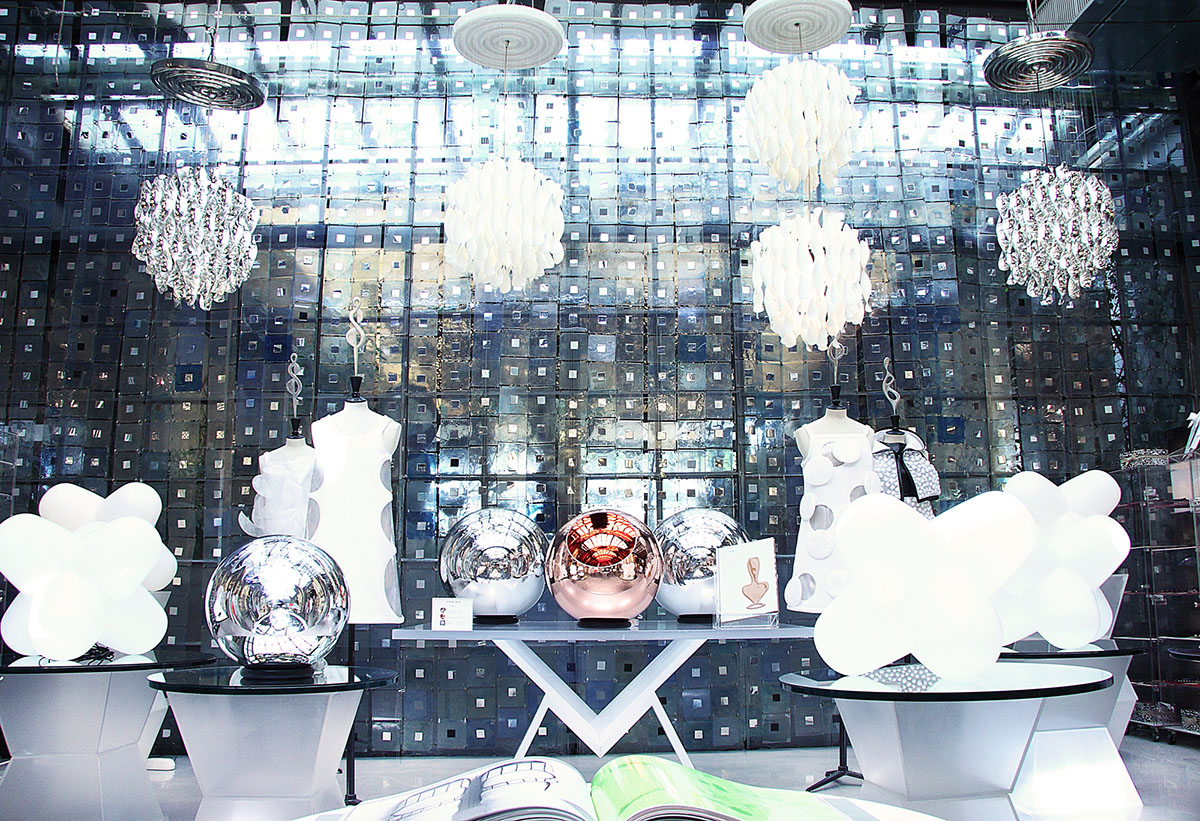
Antonello Magliozzi: How did you manage to transform a space created for a garage for cars into what has become one of the most renowned concept stores in the world?
In addition to the space we are in now, 10 Corso Como in Milan, over time you have opened other concept stores in Tokyo, Seoul, Shanghai, Beijing and New York. They all have your creative imprint, as if you were the designer who created them. They are very variable spaces and rich in decorations. Is there a specific?
Carla Sozzani: At 10 Corso Como there is a very distinctive sign for sure, it is the sign of Kris! But as Kris says: "I no longer know where I am and where Carla is” ... It is clear that he is the artist, but we did it together. For example, to tell how we managed our spaces, it started like this: Kris said to me: how do you want the courtyard chandelier? (ed.The chandelier falls between the stairwell in 10 Corso Como) and I said, "I would like it to come way down! That is all we needed. It is such a beautiful journey of work done together, and we have been working together in this way for 30 years. Let's say that my main contribution for the creation of my spaces is to see people inside them even before they are there.
I never wanted to make a shop. For this reason: first I opened the gallery and the bookshop. Kris designed the lights, the tables and all the furniture there. And in this idea there was Cappellini who helped us so much to manufacture the furnishing accessories, and then Seguso from Venice to make the chandeliers that are still here. Everything was thought of as a mixture of art and craftsmanship, which gave the spaces as a whole the sense of truth that is perceived. All the pieces in every different 10 Corso Como space has always been conceived as unique pieces. Be in Shanghai, in Seoul, or in New York, Kris has always made pieces that were only for that place, to make that space its own!
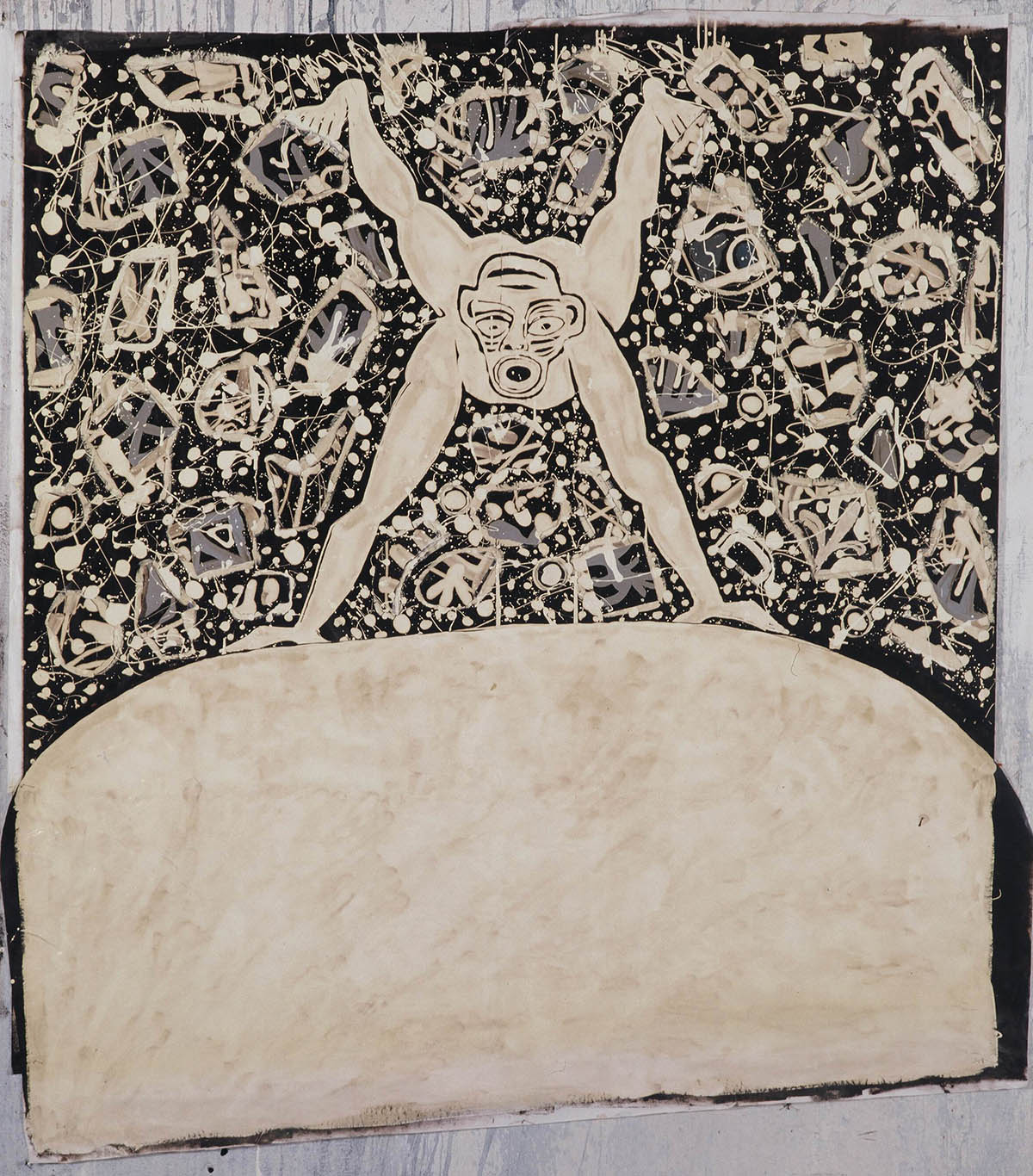
Antonello Magliozzi: So are they specific pieces that despite being removable are born for that place?
Carla Sozzani: Yes, because I don't think you can duplicate everything, it doesn't make much sense. And for this reason I think I was lucky that Kris followed me and that he was also passionate about participating in this adventure of mine.
spaces and furnishings are "layered" as we layer life; with perspectives that can change and things you can move whenever you want. A different concept from how it happened in the design of the 70s. I remember in fact that in those years there was a friend of mine who had made a house with an architect and where there was nothing that could be moved. A house with all the walls, fixed furniture etc ..., not even a chair could be moved! Crazy stuff! Starting from that cultural background, I was almost panicked in thinking about this idea of immobility. A strong desire was born to create spaces with movable objects. This was to be able to reconfigure them anytime according to the needs of our lives that are always changing.
In fact, the main driver of these spaces was that of hospitality and, for this reason, the result could not only concern decoration or furnishings, but had to turn to a concept of home. A home for a guest with multiple needs. Just like it happened in 10 Corso Como.
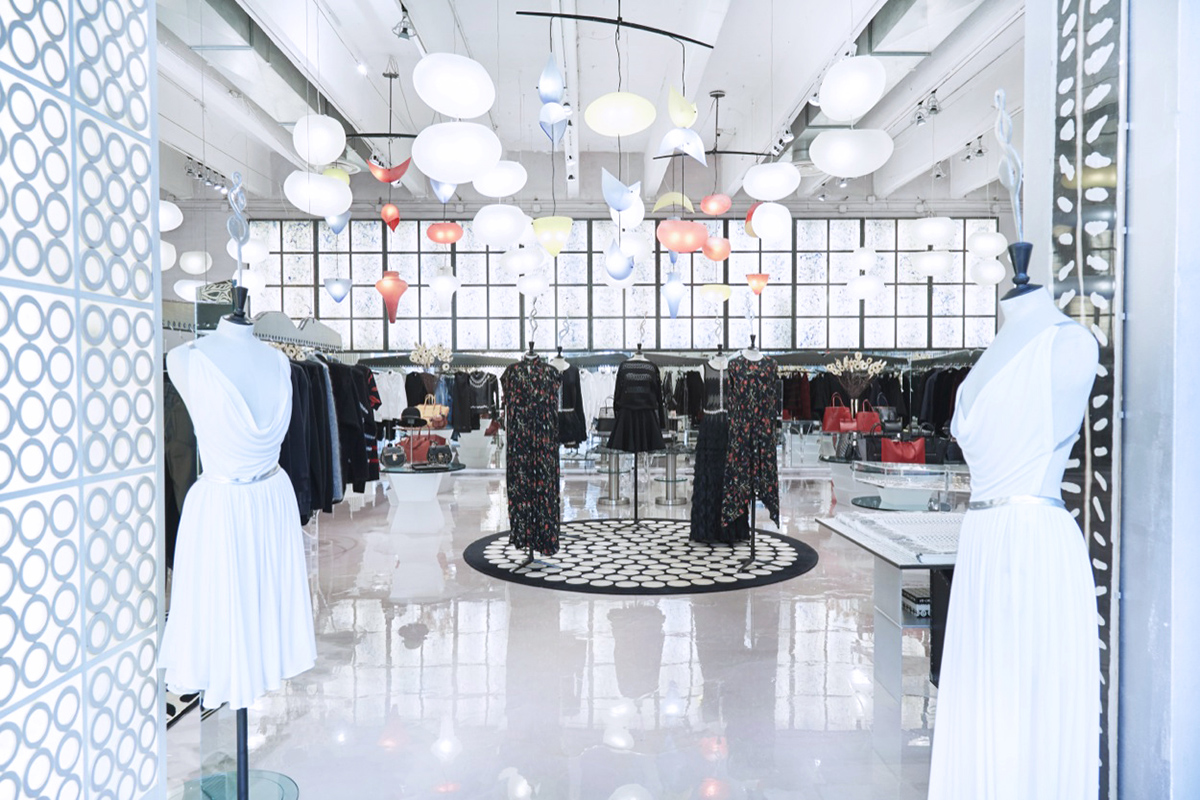
Antonello Magliozzi: Today we communicate in a very different way than 20 years ago, the period when you inaugurated your first concept store and when you started your career as a publisher of fashion magazines such as Vogue and Elle Magazine. When the communication channels were represented by printed newspapers, TV and cinema (beyond traditional forms of art). Today communication is globally determined through internet, with strong relationships with digital channels and social networks world. Can you tell us your point of view on the evolution of communication? Where are we today and where are we going? It seems that the answer to this question is inherent in the evolution of the environments you create, but it would be nice to hear your story on how communication has influenced your life and your spaces over time.
Carla Sozzani: The reason I created this place is because I wanted people to communicate. In the past 10 years there has been a sort of "hangover" of communication: between online sales, people who no longer read newspapers, with poor human relationships, and so on. Even in the past three years, I remember a Valentine's Day here, in 10 Corso Como, in which all the couples were on the phone. One in front of the other on Valentine's Day: they exchanged messages and photos on the phone. One thing not to believe! Lately, however, especially the super young and many Asians come here much more to have an aperitif and to talk to each other in person. I am an optimist in general, especially for the future. I think a big change is happening now, I see it around me. This is because perhaps people have finally realized that they cannot spend their lives on a screen. What are these purchases for? You are always locked in the house! You no longer need anything and you no longer talk to anyone; everyone just write?
Being in a public place means "serving people " and welcoming them,. I see that today people like much more to drink , eat and talk, have a sense of conviviality. A sense of sharing that wasn't even there before in every gesture, including eating. Once people ordered for themselves, now everyone shares their plate. I see a desire for sharing especially in young people who are cross-pollinating (I hope) all of us and I find it beautiful!
So actually the reason why 10 Corso Como was born was because there was little opportunity for physical communication. Today in my opinion the idea behind 10 Corso Como has even more value than before. This is because: living an experience is always fundamental to life. It is fundamental to live with all our senses! I said this thirty years ago and now, even more convinced than I was thirty years ago!

Antonello Magliozzi: Carla, your person is very close to Milan and to an idea of fashion and design in this city. What do you think Milan represents today? How do you think Milan is seen from the rest of the world. Tell us what you hear about our city?
Carla Sozzani: Lately magnificent! Especially after 2015, after this amazing Milano Expo which, unlike what happened in all the other cities that have hosted the Expo, a renaissance has taken place. It is truly incredible! I don't know what happened to the city .. I have lived in Milan since I was 9 years old because I was born in Mantua, ... but in the 60s and 70s during the best years for fashion, and during the ’90 I have always heard it said: ah what a gray Milan! Lately instead: ah what a beautiful Milan! Interesting Milan, beautiful exhibitions in Milan, things happen in Milan, etc Then private institutions such as the Prada Foundation, Bicocca have created interesting new realities…All this, however, only in the last 4 years. All of this is very interesting to me, to see things as they change! Which also makes sense: Milan in the 60s was famous for art, there were all the galleries, the 70s for design and architecture, the 80s for fashion ... And today I also see a splendid continuity with the values of Milan in a new renaissance.
Antonello Magliozzi: In a world that has entered the 4th industrial revolution, that suffers global problems such as those of climate change, how do you think art, fashion and culture can correctly direct the choices that will build the future of our children?
Carla Sozzani: Without culture, nothing can be made. To respect the environment is the first thing when making anything. Everyone talks about sustainability. Today what you can really do is consume less. It is necessary to consciously respond and determine need. It is also necessary to carefully evaluate what it means for the economy to consume less. Consumption offers job opportunities to many people. If you no longer consume as before, you do not produce at the same level with the result that people could no longer work as before. Consuming too much is not good, but the problem of people's work must be tackled and resolved, even in the fashion and production sector.
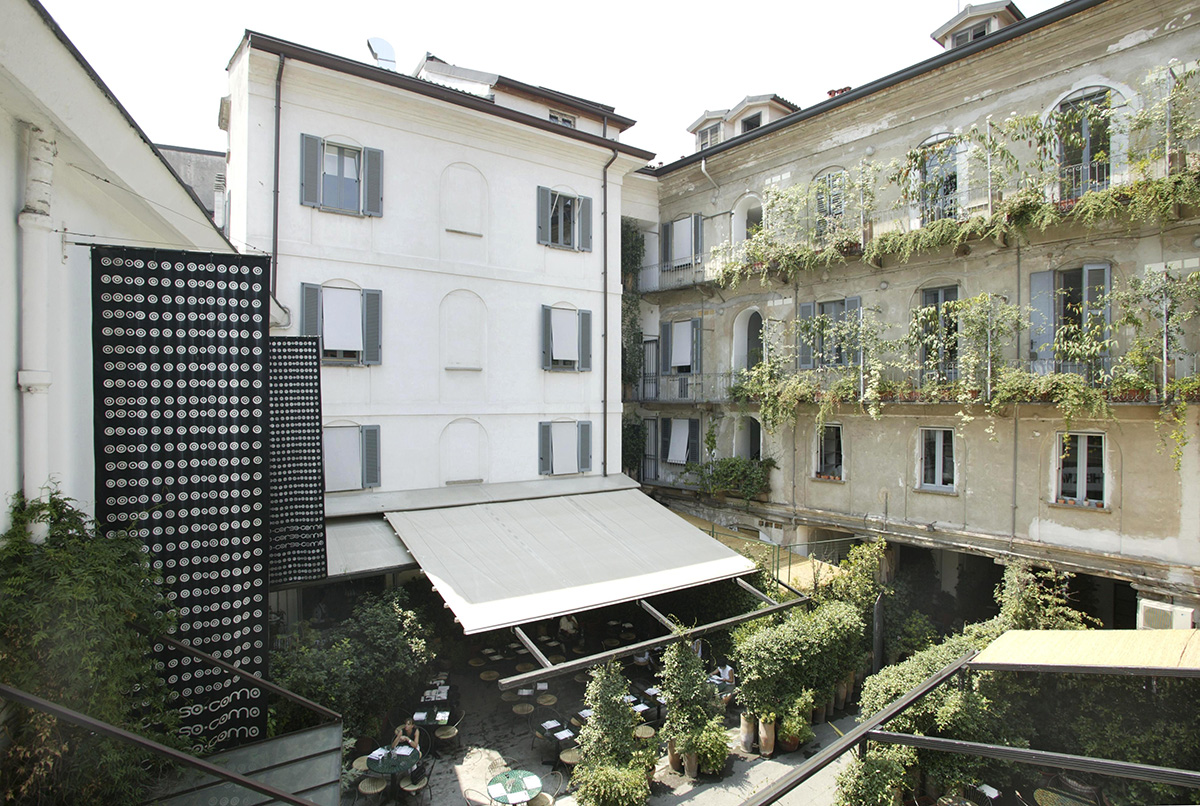
Antonello Magliozzi: Going back to 10 Corso Como and your concept stores around the world, what is your vision for the future? How do you think your places will continue to transform if, as you have told us, the transformation over time is the main vocation of the places you create.
Carla Sozzani: I like the idea of expanding the experience of the concept of 10 Corso Como and of combining it with other environments and other cultures. The cross pollination of cultures is the most fantastic thing. That's why when we opened 10 Corso Como in Seoul, or Shanghai and New York , I think there was a beautiful evolution of the original idea. 10 Corso Como is a symbol of made in Italy, of Italian creativity, of open-mindedness that, in other countries, merges almost spontaneously with other products, other expressive forms, presentations of art, photographers, objects, and food. Thus, 10 Corso Como really looks like an endless idea.
Then I would like to enlarge the concept of hospitality. 10 Corso Como is a home, a place to be. That's why I also imagined to make people sleep here. In 2003 I created 3 suite rooms. We were here at the bar with Kris and we saw many people sitting in the corners kissing and so, once, we said to each other: wow, think about making a love hotel! (editor's note: Carla laughs). Thus the idea of making suite rooms was born. I'd like to enlarge this concept all on the street front, around the internal square. As well as an Italian historical square. Here everything started from an art gallery, then the bookstore, then from everything: restaurant, shop, etc. and finally the hotel. Today I see that, as in the old Italian squares the pinnacle was the church, here the pinnacle was the gallery, today I would love to build a new reality, where the pinnacle is the hotel in order to represent the idea of hospitality. A place where guests arrive and feel really welcomed, they have exhibitions, shopping, food, the bar, and a place to decide to stay as long as they want.
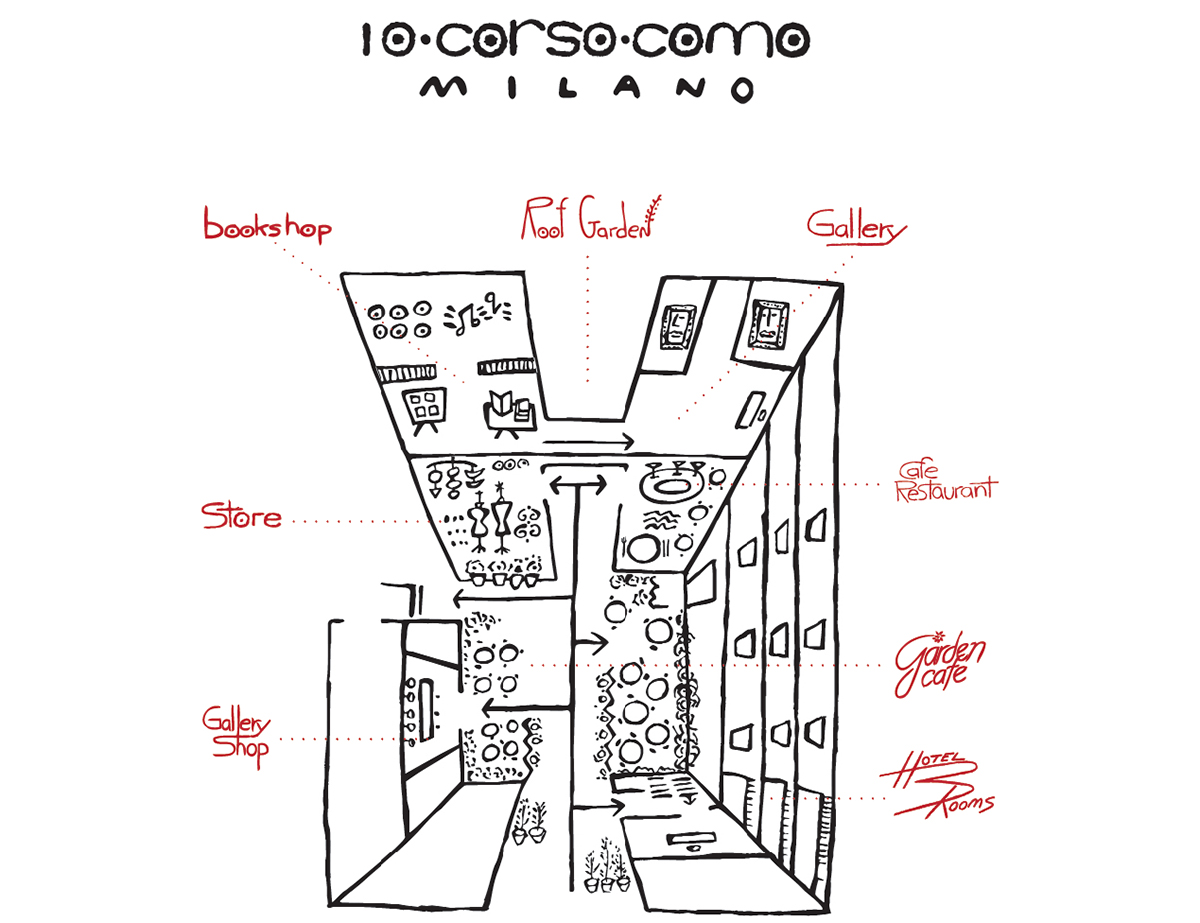
Top image courtesy of Paolo Zerbini
All images courtesy of 10 Corso Como unless otherwise stated
